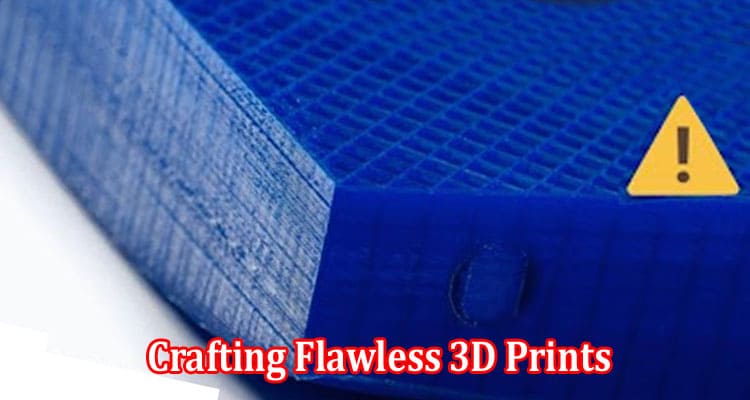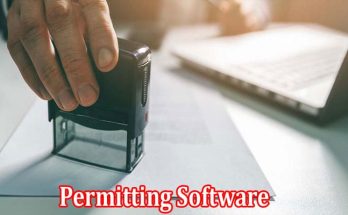3D printing is revolutionizing the way we create objects, from intricate prototypes to personalized products. However, it’s not without its challenges. One common issue that plagues 3D printing is warping, where printed objects deform or detach from the build plate. This can lead to failed prints and wasted resources.
In this article, we delve into the causes of warping and provide practical solutions to overcome this obstacle. By understanding and addressing warping, we can unlock the full potential of 3D printing and ensure successful, high-quality prints every time.
Understanding Warping in 3D Printing
Warping is an annoying issue in the field of 3D printing that can hinder the designer’s creativity. But don’t worry; we’ve got your back! So, to put it in layman’s terms:
First of all, what is 3D printing warping? Warping occurs when your carefully planned 3D print begins to twist’ flex or tear away from the printing surface.
How come warping happens? The critical factor is heat! When your newly laid down layers begin to cool, they have the potential to flex in an uneven manner. Because of this, the print experiences internal tension and eventually develops those annoying distortions.
Frequent Instances of Warping
Consider the following scenario: you’re trying to print a stylish vase, but its tall and compact dimension makes it more likely to suffer warping due to temperature variations.
For another example, think of a delicate figurine with overhangs that can’t withstand the weight of the rest of the piece when it cools, leading to a terrible warping effect.
Don’t give up hope, though! The first step towards defeating warping is knowing its origins. So, let’s explore 3D printing in greater depth and find solid answers to the problem of warping. Stay tuned!
Discovering the Causes of Warping in 3D Printing
- Substance Shrinkage: The substances used in 3D printing have a propensity to shrink as they cool. Poor quality prints can result from layers cooling at various speeds, which can cause warping.
- Inadequate Material Adhesion: It would be devastating to see your 3D print come loose from the print bed. It sometimes curves up at the corners. One of the main causes of warping and unsuccessful prints is inadequate material adherence to the build surface.
- Heat Fluctuations: Extreme temperature swings while printing might seriously damage the structural integrity of your design. When the temperature drops too quickly or in patches, warping occurs.
- Moisture Challenges: Certain substances for 3D printing have an indifferent connection to moisture. When moisture is absorbed by a substance, it might act in unexpected ways or even deform if the humidity level is too high.
- Resisting Gravity: In the realm of 3D printing products, gravity can be difficult. Warping is an annoying side effect that can occur while printing risky overhangs or unsupported structures because they place extra strain on the printer.
- Inadequate Support Structures:3D printing is no different than erecting a tall skyscraper without a sturdy foundation. Complex designs that don’t have adequate support structures often bend and break down.
- Adequate Model Placement: The success or failure of your print depends on how well you place your model on the print bed. By selecting the incorrect direction, you run the risk of overcooling and distorting sensitive parts.
With this information in hand, you can identify the factors that lead to warping and take steps toward producing 3D prints that are faultless and devoid of distortion.
10 Tips to Avoid 3D Print Warping: Keep Your Prints Perfect!
Warping can be a headache for 3D printing enthusiasts. It not only ruins your creations but can also cost you more in 3D printing services. But fear not! We’ve got you covered with some easy-to-follow tips to prevent warping and achieve flawless 3D prints.
- Level the Print Bed: Get the perfect nozzle-to-bed distance by leveling the print bed. It ensures the first layer sticks properly and prevents warping. When the nozzle is too far from the bed, the filament may cool too quickly before sticking, leading to warping issues. On the other hand, if the nozzle is too close, it can scratch the bed but not necessarily cause warping.
- Heat the Print Bed and Head: Warm things up! Heating the print bed and head helps the filament stick better to the print bed. For the first layer, consider increasing the bed and nozzle temperature by a few degrees. This will improve filament flow and adhesion. However, keep in mind that the required temperature adjustments can vary depending on the material you are using.
- Use a Heated Enclosure: Keep it cozy! A heated enclosure maintains stable temperatures around the print, reducing the chances of warping. It prevents sudden temperature changes that could cause uneven cooling and shrinking of different parts of the print. Not all 3D printers have built-in heated enclosures, but it is possible to create a DIY enclosure to enjoy the benefits.
- Use a Raft & Brim: Extra support, please! Rafts and brims are additional structures you can add to prevent warping. A raft is an extra layer attached to the foundation layer of your print. It provides a sturdy base for the print and improves adhesion to the print bed. Brims, on the other hand, extend from the outer edges of your model and serve a similar purpose of enhancing adhesion.
- Configure Slicing Settings: Play with settings! Your 3D printing software offers various slicing settings that can help prevent warping. Two important settings to consider are increasing the first layer’s height and expanding the first layer line width. A thicker first layer increases the contacting surface with the print bed, resulting in better adhesion. Similarly, widening the first layer line increases extrusion pressure, improving adhesion and reducing the chances of curling. However, while tweaking these settings, ensure that they do not compromise other parameters like wall thickness and overall print quality.
- Reduce Fill Density: Less is more! Filling density refers to the amount of filament inside your 3D model. Increasing the fill density can lead to more shrinking during cooling, increasing the chances of warping. On the other hand, decreasing the fill density reduces the shrink rate, resulting in fewer warped 3D prints. Find the right balance between fill density and print strength to achieve optimal results.
- Reduce Printing Speed: Slow and steady! Reducing the printing speed can prevent warping by giving the layers more time to cool evenly. A slower print speed allows for better cooling, proper adhesion between layers, and reduces internal stress, leading to a smoother print surface. Experiment with different speeds to find the sweet spot for your specific print.
- Turn Off Cooling Fan for First Layers: Stay warm! Cooling fans are essential to prevent overheating during 3D printing. However, during the first few layers, turning off the cooling fan can be beneficial. When the cooling fan is on at high speeds, it can abruptly cool the extruded filament during shrinking, causing it to pull up from the print bed. This improper adhesion can lead to warped 3D prints. Keeping the cooling fan off for the initial layers allows the filament to adhere more securely.
- Cleaning the Printing Bed: Dust off the dirt! Keeping your print bed clean is essential for successful 3D printing. Dust and dirt particles on the print bed can hinder the adhesion of the filament. Before starting a new print, ensure that the print bed is free from any debris and clean it using isopropyl alcohol if necessary.
- Use Adhesives: Stick it right! To improve filament adhesion to the print bed, you can use adhesives like glues, blue tape, or specialized 3D printing adhesion sheets. These help create a better bond between the print and the bed, reducing the likelihood of warping. However, be cautious about the type of adhesive you choose, as some may negatively interact with certain 3D printing materials.
Now that you have these 10 tips in your arsenal, your 3D printing adventures will be warp-free and full of success. Best 3D Printing Software
Get advantage of SelfCAD’S robust and flexible 3D printing software to your full capacity as a 3D designer. This 3D model maker’s tools accelerate the creative process from drawing to rendering. Both novices and experts will value the intuitive UI and integrated training. With our adaptable storage solutions, you can easily access your projects and benefit from our software’s affordability without sacrificing functionality. Join our welcoming community to get attentive customer service. Begin your free trial today to see how SelfCAD can make 3D models faster, simpler, and more fluid.
Prevent Warping, Enjoy Flawless Prints!
Warping is a common enemy in 3D printing, frustrating and disheartening us. We can confidently tackle this difficulty and produce faultless 3D prints by understanding its causes and preventing it.
We can improve adhesion and prevent warping by leveling the print bed, regulating temperatures, and employing heated enclosures. Rafts, brims, and slicing settings strengthen our prints.
Reducing fill density, printing speeds, and cooling fan use are further anti-warping tactics. We can bond prints on beds by cleaning and utilizing adhesives properly.
Remember that each 3D printing project has unique requirements, and some experimenting may be needed to achieve the right balance for warp-free prints.
3D printing adventurers, don’t worry about warping! We may confidently start our creative path with these ten tips. Each print allows us to learn and grow, resulting in stunning works.
With these warping-free solutions, let’s explore 3D printing’s endless possibilities. 3D printing has a bright future, and with a little imagination and patience, we can unlock its full potential and manufacture warp-free, faultless prints every time. Let’s start those 3D printers, enjoy creating, and defeat warping! Print well!




